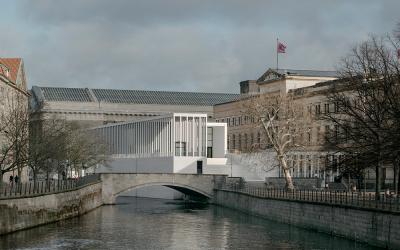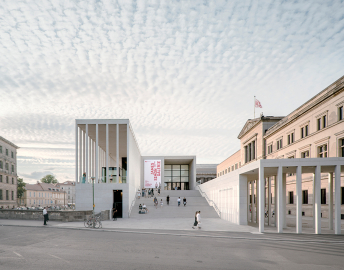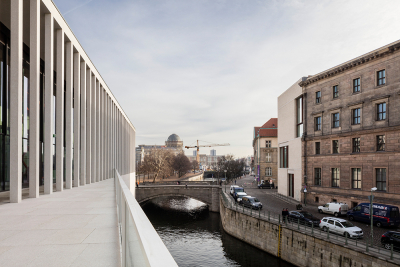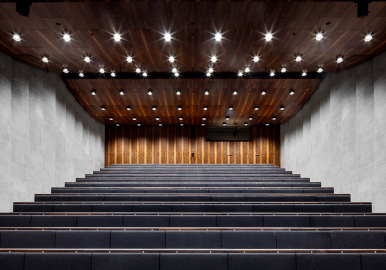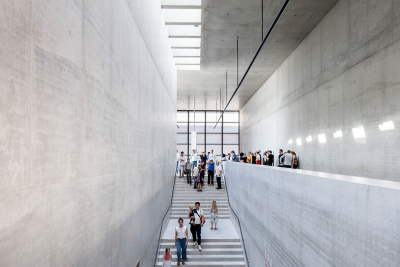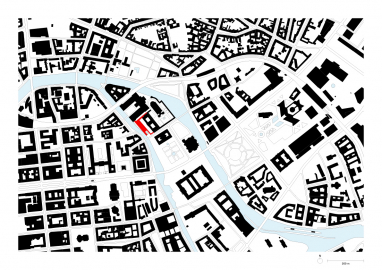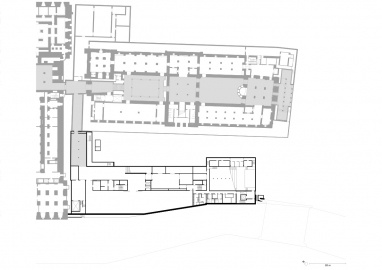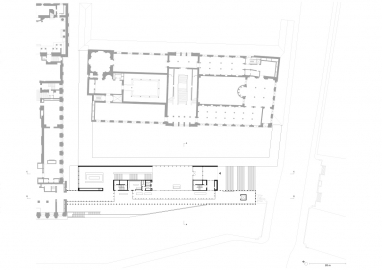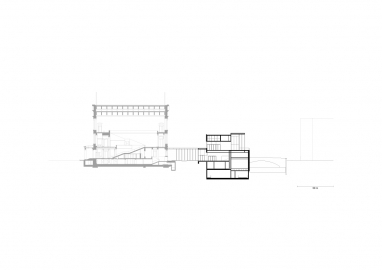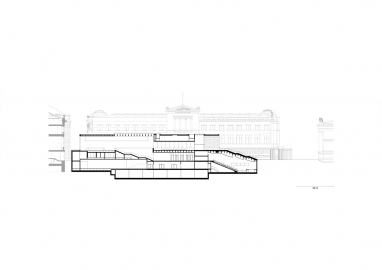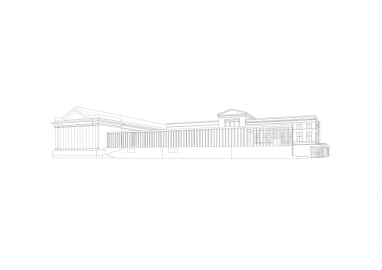James - Simon - Galerie
The new entrance building to Berlin’s Museum Island completes the historic ensemble, a UNESCO World Heritage Site. It is designed to welcome large numbers of visitors, house all the facilities required by the contemporary museum-goer and physically connect the museums above ground as well as below via the Archaeological Promenade.
Sited on a narrow strip of land on the Museum Island, the staggered volumes ensure that the view of the Neues Museum is preserved. A high stone plinth reinforces the bank of the canal, above which a tall colonnade rises up. These slender columns continue the historic colonnade in a contemporary form, creating a small courtyard. Three flights of wide steps set between the elongated plinth and the colonnade, draw visitors into the building. On the upper level, visitors enter a generous foyer with ticket counters and direct level access to the Pergamon Museum. The foyer also encloses the cafeteria and opens out onto a grand terrace. A mezzanine floor beneath the foyer accommodates the museum shop, cloakroom and toilet facilities, while the exhibition space and an auditorium are situated in the basement level, which also provides the entrance to the Archaeological Promenade.
The civic architectural language of the James-Simon-Galerie adopts existing elements of the Museum Island, such as built topography, colonnades and outdoor staircases, referencing the work of architects involved in the creation of Museum Island. With its five historic of free-standing museum buildings, the Museum Island forms a complex topographical ensemble. With no clear alignment nor internal orientation, it was difficult, or even impossible, to go from one institution to the next without leaving the island. The James-Simon-Galerie unlocks this, complementing the interplay of spatial alignments and reorientating it towards the city. With four entrances on three levels, it eliminates barriers, enabling the centre of the island to become penetrable. It provides direct access to two, in future four, museums via the Archaeological Promenade, while simultaneously maintaining the historic main entrances of each museum. This variety of entryways offers both a modern infrastructure for large numbers of visitors, as well as visits to the individual buildings.
The building site, an eluviation dating from the Ice Age, posed a huge technological challenge. Firm building ground is only to be found at depths of up to 40 metres. The building rests on around 1,200 small-diameter bored piles embedded up to 50 meters deep in the ground and a filled-in concrete bed under water. Constructed on this foundation, cast stone is the primary façade material, and large prefabricated elements were used. Aggregate made of white marble gravel from Saxony lends the building its tonality. Behind the slender columns, made from the same material, the building envelope is glazed. The interior is characterised by high-quality textured surfaces, in particular smooth in-situ concrete walls and floors made of bright Crailsheim shell limestone. Additional materials used are smoked oak parquet flooring, furnishings and wall coverings made of European walnut as well as bronze for window profiles, doors and handrails. A copper braid was used on selected ceilings. The front and end walls of the entrance area were accentuated through the use of translucent material with a mysterious luminosity – a banded marble, applied in thin layers on glazing.

